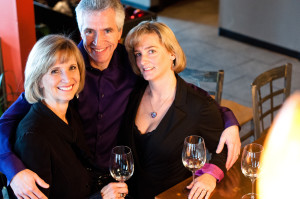Last weekend, the Larksong Trio played in a concert for the Parma Music Festival in Portsmouth, NH. This was the first year
of the festival and brought together composers and musicians from around the country and as far away as Sweden. The festival showcased contemporary music from jazz to classical to electro pop to folk. The concerts were rich in variety, style, musicianship and exciting new music.
The Larksong Trio, an ensemble including flute, piano and vocals (me!), is releasing our first CD this fall on Big Round Records, a division of Parma Recordings. We played the title track, “Homeward Bound” and several other new arrangements of old songs, including the Beatles tune “in My Life,” two spirituals arranged for us by Bill Fletcher and a new song, called “For Eternity,” written by Richard Gardzina. Bill and Richard are two of our favorite musicians, alive and well, composing and living in New Hampshire.
A composer came up to us after our performance Friday and said our music was “a breath of fresh air.” “Beautiful,” “dynamic,” and “expressive” were some of the other lovely comments. It was very gratifying to play for people who had never heard us before and have their response be so delighted and positive.
Currently, the CD is slated to be available in October. I will certainly keep you posted. If you want a preview, go to our new website – www.larksongtrio.com, where you can listen to a couple of tracks. And for you social media lovers, check out our new Facebook page and give us a thumbs up!










